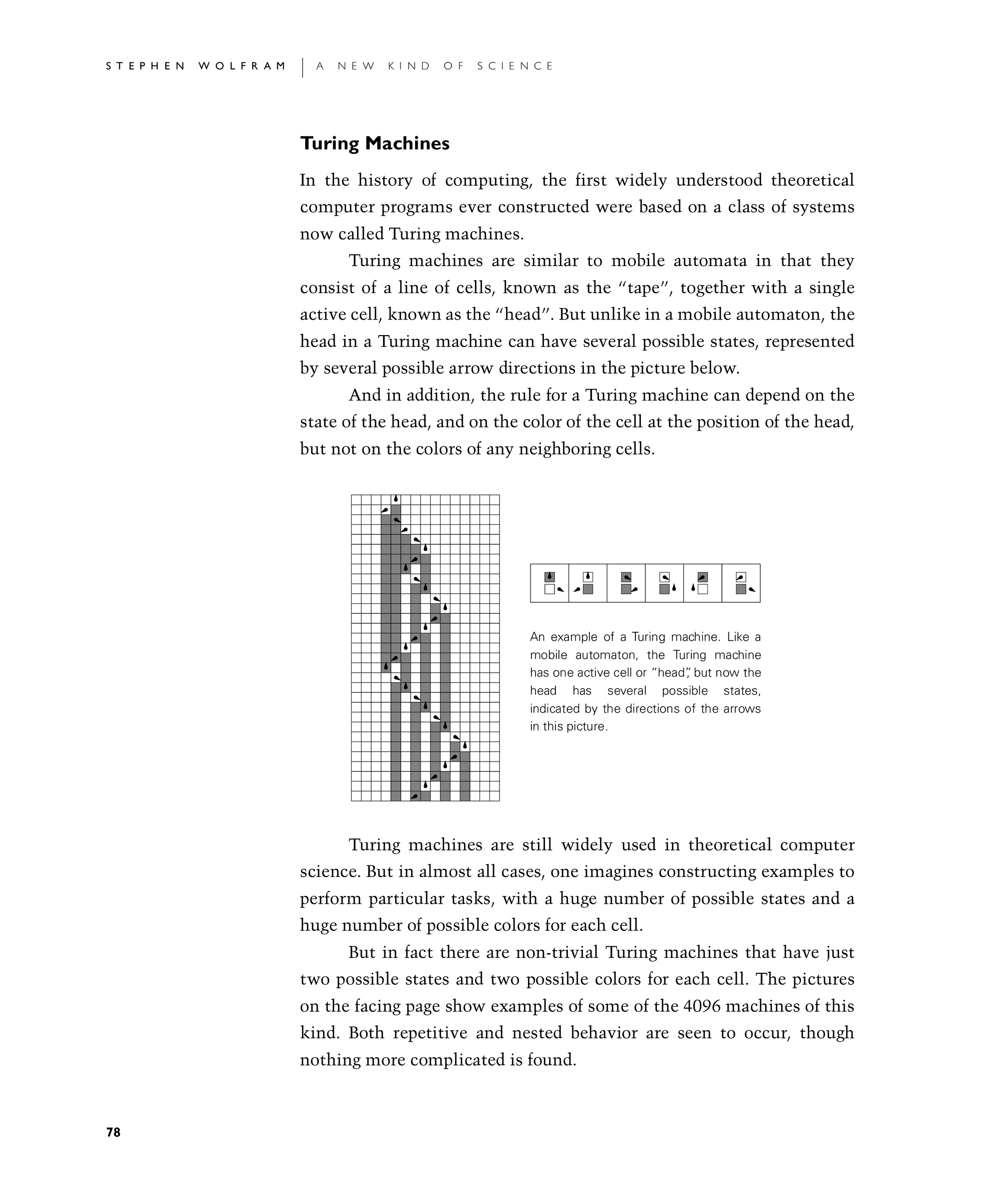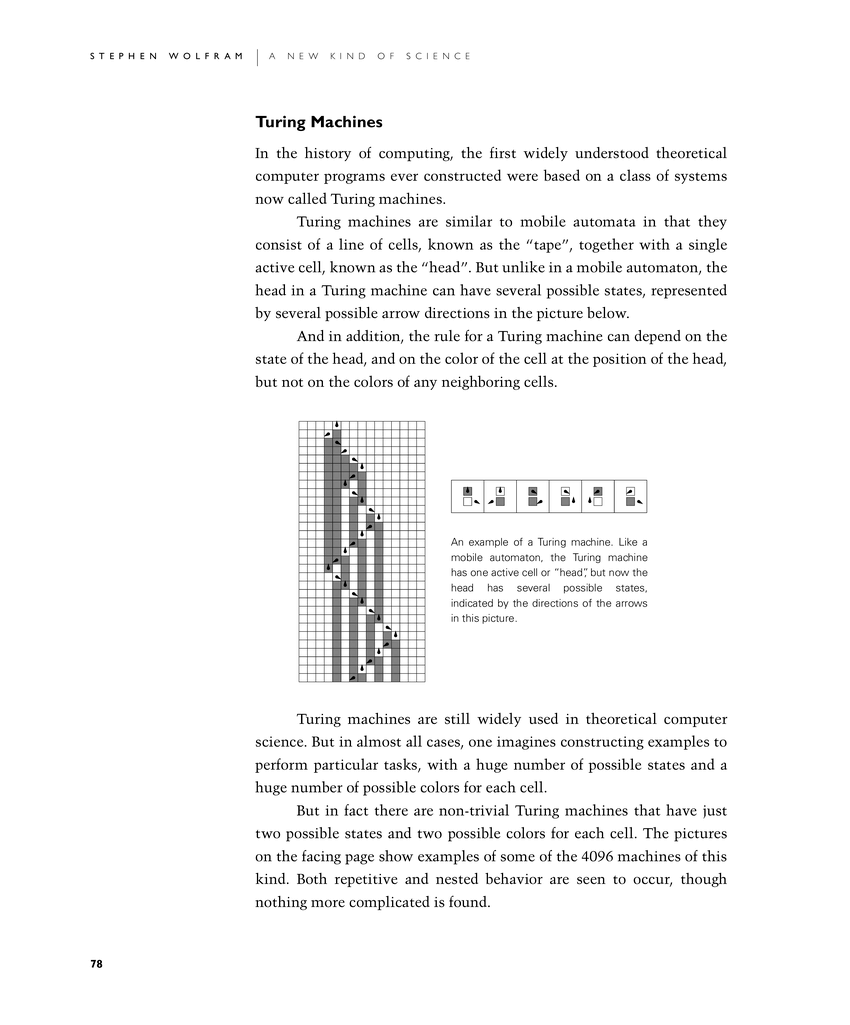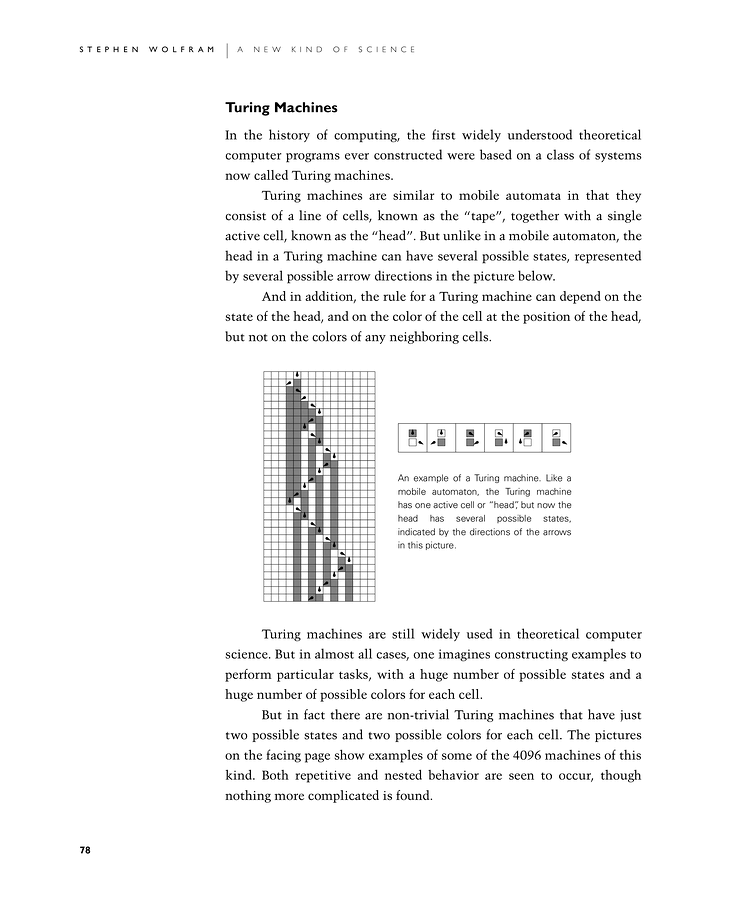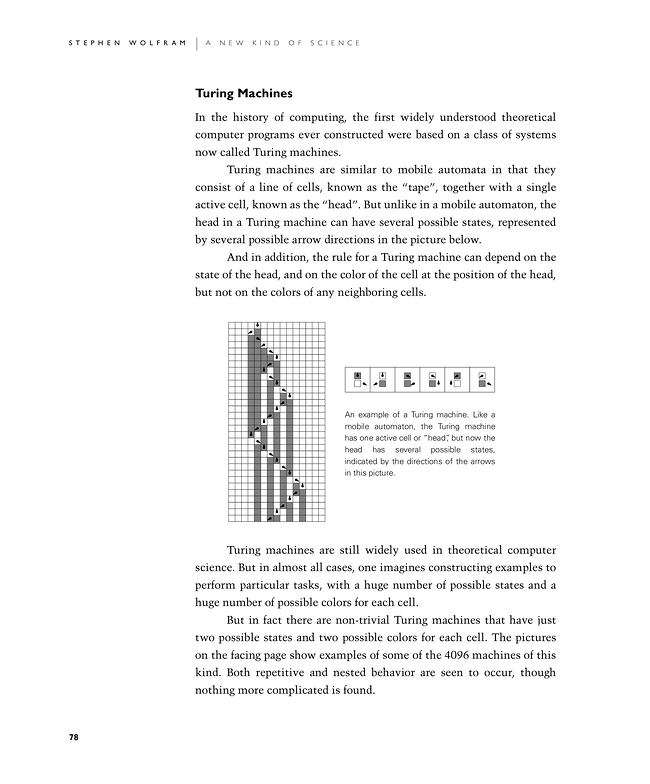Turing Machines
In the history of computing, the first widely understood theoretical computer programs ever constructed were based on a class of systems now called Turing machines.
Turing machines are similar to mobile automata in that they consist of a line of cells, known as the "tape", together with a single active cell, known as the "head". But unlike in a mobile automaton, the head in a Turing machine can have several possible states, represented by several possible arrow directions in the picture below.
And in addition, the rule for a Turing machine can depend on the state of the head, and on the color of the cell at the position of the head, but not on the colors of any neighboring cells.
Turing machines are still widely used in theoretical computer science. But in almost all cases, one imagines constructing examples to perform particular tasks, with a huge number of possible states and a huge number of possible colors for each cell.
But in fact there are non-trivial Turing machines that have just two possible states and two possible colors for each cell. The pictures on the facing page show examples of some of the 4096 machines of this kind. Both repetitive and nested behavior are seen to occur, though nothing more complicated is found.
An example of a Turing machine. Like a mobile automaton, the Turing machine has one active cell or "head", but now the head has several possible states, indicated by the directions of the arrows in this picture.



